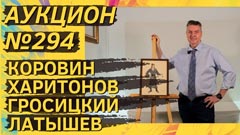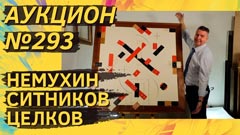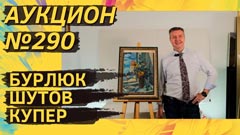
1960s UNOFFICIAL ART
ZVEREV Anatoly Timofeevich (1931–1986) Circles and lines. 1959. Paper on cardboard, lead pencil, oil. 59.5 × 39.5
In “Circles and Lines” the main artist of the “second avant-garde” masterly uses the language of the avant-garde of the 1910s. According to legend, the sudden appearance of the Suprematist cycle by the expressionist Zverev in the late 1950s occurred after he saw works by Olga Rozanova and Lyubov Popova in the apartment of George Costakis. Being greatly impressed by the Russian avant-garde, he created a series of geometric abstractions of his own. It was a very short and vivid experimental period, which began suddenly and ended suddenly. Since the end of the 1950s, Zverev never returned to this subject. And in general Zverev's non-objectivity occurs rather seldom. It is just that some of his later works, which at first glance seem abstract, in fact have a hidden figurative basis. A different thing is that it sometimes takes a great deal of effort to discern it. Today the Suprematist cycle is a grail for collectors of Zverev. Such works are very rare. Some of them died or was damaged in a fire at Costakis’ dacha in Bakovka. Some dispersed throughout the world in the luggage of diplomats and foreign correspondents. Some for many years or permanently settled in the family collections, and chances of their rapid sale are very small. So the appearance of each Suprematist Zverev is an event for the keen admirers of his art. Expert Valery Silaev attributes museum significance to this work in his conclusion.
YAKOVLEV Vladimir Igorevich (1934–1998) Portrait of a woman with a flower. 1990s Paper, gouache. 61 × 43
A dramatic late portrait of the “artist of freedom” Vladimir Yakovlev. This work was exhibited seventeen years ago at the exhibition “Masterpieces of Vladimir Yakovlev” in the Kino Gallery, at the time the main gallery on Yakovlev. It is published in a catalogue and is accompanied by an expert report. The work synthetically combines both of the artist's main genres, the psychological humanistic portrait and the “portrait of flowers”. In any bright positive thing by Yakovlev, the theme of sadness, loneliness and fragility of human destiny still comes through. “Portrait of a woman with a flower” is a late gouache by Yakovlev, and it refers to the period when doctors briefly restored sight to the almost blind artist.
SVESHNIKOV Boris Petrovich (1927–1998) Two on the bridge. 1988. Oil on canvas. 71 × 59
Inspirational piece by camp artist Boris Sveshnikov. Its special mysticism, philosophical complexity and technical laboriousness will undoubtedly attract the attention of collectors. Many will like the original name. Sveshnikov was often merciless in naming his works. But this time everything is quiet — without the “deaths” and “graves”. Just “Two on the bridge”.
BAKHCHANYAN Vagrich Akopovich (1938–2009) Victory over the Sun. 1979. Cardboard, collage. 28 × 26.5
The graphic artist Vagrich Bakhchanyan, whom friends called “Bach”, was first of all a “word artist”. He was fantastically inventive and generous with sarcastic metaphors and aphorisms. Many of them went to the people, became part of urban folklore. “We were born to make Kafka a reality”, “Twiddle thumbs — save Russia!”, “By hook or by crook, do not live by lies” — all these aphorisms actually have an author — Bach. By the way, the pseudonym Limonov for writer Savenko was also invented by Bakhchanyan.
The artist, who had to scrape by in the USSR with rare commissions in “Literary Newspaper” and the magazine “Knowledge is Power”, left the country in 1974. Being “150% Armenian” (because even his stepmother was Armenian), he became a “pioneer of non-Jewish emigration”. He moved to America and worked on a newspaper together with Sergey Dovlatov and Alexander Genis. Since then, he only came to Russia once — in 2003, 29 years after his departure. When asked, he promised that in the future he would come regularly — every 29 years.
Works by Vagrich Bakhchanyan have always been informal and therefore defiantly non-commercial. Small, sometimes tiny collages and homemade books were good for publication or viewing in a chamber circle. But for exhibitions, such material was difficult. Vagrich was only once persuaded to transfer his ideas onto large canvases. They say this work was a great agony for him, he could not share his soul. But it was these large canvases that set the auction records. Why am I saying this? Because our collage 28 × 26,5 is almost a giant size by Vagrich's standards. And the conceptual metaphor needs no explanation — Malevich's “Black Square”, which first appeared in the avant-garde opera “Victory over the Sun”, literally goes like an eclipse on the luminary.
The rare conceptual work comes from the collection of Alexander Reznikov and was exhibited in Italy in 2012.
CONTEMPORARY ART
NAMDAKOV Dashi (1967) Transformation. 2000s. Oil on canvas. 50 × 80
A unique case. For the first time ever, we are putting up for public auction a pictorial work by the famous Dashi Namdakov. He is known as a sculptor, jeweller and graphic artist. And his sculptures occasionally appeared at auctions. But paintings — never. Moreover, “oil on canvas” in his execution is generally an exceptional rarity. So, there are all the prerequisites to the fact that the result will surprise us greatly.
Dashi, short for Dashinima («lucky sun», in Buryat), was born into a family of hereditary darhans who were devoted to the mysteries of craftsmen working with fire and metals, including for the production of religious objects. The Buryat sculptor's work intricately combined the plasticity of Scythian and Sarmatian gold, amulets, shamanic talismans, Buddhist adornments, and the complex imagery of steppe nomadic cultures. In the early 2000s the works of this original sculptor became in vogue in Russian establishment circles. Tens of thousands of dollars were paid for his sculptures, exhibitions were held at the Tretyakov Gallery and other museums in the country, and Dashi's name became known far beyond Russia. For example, in 2012 in now unfriendly London his sculpture “Genghis Khan” was installed. The decision was made with the participation of the royal family, which owns the parks. Nevertheless, the important symbolic work was received by the British public with hostility: namely, London is no place for a monument to a tyrant. The monument stood for two years, then it was moved. For Dashi, the image of Temüjin Genghis Khan is primarily not politics, but a mystery that has worried him for many years. It is no coincidence that Namdakov became the production designer of the outstanding film “Mongol”, directed by Sergey Bodrov Sr. In 2007, the artist received the Nika Cinema Award for his work.
The painting “Transformation” describes a moment of mystical transformation. Here one can read both the first breath of life. And a metaphor for the attempt to change one's own essence. And even, don't be surprised, can see a female image in a mystical being in the artist's characteristic manner.
IKONNIKOV Dmitry Evgenievich (1952–2019) 50 meters to the sea. 2005. Paper, tablet, tempera, gouache. 80 × 100
Dmitry Ikonnikov is one of the most famous modern masters of easel graphics. He does not paint large meter-long works in oil and acrylics, but in gouache and tempera. He made this deliberate choice when he was still a student at the poster workshop of the Surikov Institute. The water-soluble paints allowed Ikonnikov to achieve the complex effect of haze and translucency, which the artist needed to create an atmosphere of transience, lightness and detachment. The painter himself explained his choice in the following way: “I don't like oil and other "fat" paints. I don't like glaring spots and shiny surfaces. The surface itself is valuable. And paper, in combination with water-based paints, allows me to give more air, transparency. It delights with texture”. However, if we abandon the terminological controversy, Ikonnikov's gouaches are essentially painterly works in terms of the difficulty of working with color and the scale. His style is very recognizable and remains a most valuable quality for an artist. And the themes and subjects — yes, eternal: landscapes, nudes, still lifes. His separate love is the marine theme. In his youth, Ikonnikov sailed the seas and worked as a port loader. Later he illustrated books by Bazhov, Gianni Rodari and Vasiliy Shukshin. But the pinnacle of his creativity is certainly easel graphics of the mature period. And today we see before us an exemplary piece of Ikonnikov's romanticism — a meter-long gouache “50 meters to the sea” — once the best work of one of the exhibitions of the now deceased master.
1960s UNOFFICIAL ART
IZMAILOV Evgeny Askerovich (1939) Diagrams. 1995. Paper, tempera, collage. 42 × 59
Evgeny Izmailov is a sixties artist of Mikhail Roginsky's and Boris Turetsky's circle. Like them, he taught at the Soviet island of freethinking — at the Correspondence People's University of the Arts. After 1976, Izmailov exhibited at the City Committee of Graphic Arts on Malaya Gruzinskaya Street, as a member of the groups “Twenty”, “Twenty-One” and others. This tempera comes from the collection of Alexander Reznikov. It is published in Natalia Sinelnikova's book “Nonconformists” and in the catalogue of the 2012 exhibition at the Italian Ca' Foscari.
GERLOVIN Valery Markovich (1945) Composition. 1972. Oil on canvas. 61 × 49
Valery Gerlovin and his wife Rimma Gerlovina are important figures in Moscow Conceptualism. The work belongs to a particularly valuable pre-emigration period (the Gerlovins left in 1979) and was once in the collection of his friend and accomplice in the Bulldozer Exhibition, Sergey Bordachev. The painting is published in the catalogue of the Italian exhibition of Alexander Reznikov's collection.
- Log in to post comments










